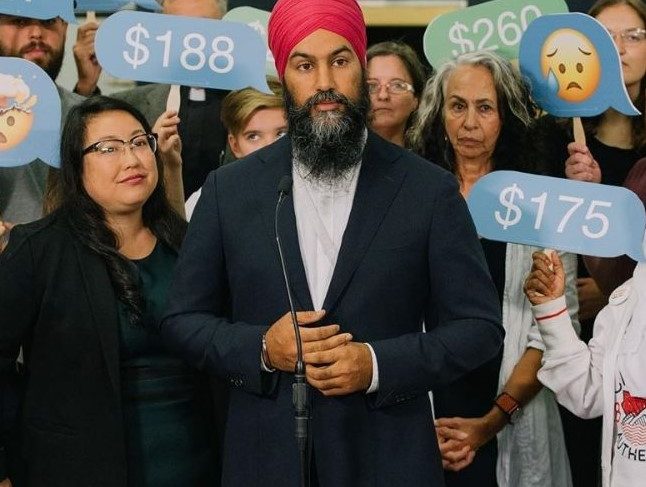
OTTAWA – In pledging to cap cellphone and internet prices as part of its quest to form the next federal government, the NDP faced a fierce backlash on Friday – not from its political opponents but from the industry it targeted.
Campaigning in Toronto, NDP Leader Jagmeet Singh said the party doesn’t just want a price cap, which it says would result in an annual savings of $250 for families, but also wants the CRTC to impose on telecom companies a “mandatory affordable, unlimited data plan.”
He explained price caps have worked in the U.S. and Australia, which reduced wireless bills and did not “result in losing investments nor service.”
Singh also said the price caps could be lifted once prices come down.
Robert Ghiz, president and CEO of the Ottawa-based Canadian Wireless Telecommunications Association (CWTA), considers the NDP plan unrealistic. “If you look at what the facts are, according to Stats Canada, wireless prices have decreased by 54% between 2014 and 2018,” he said in an interview, attributing that price-drop to “facilities-based competition” promoted by federal Conservative and Liberal governments over the past 15 years.
“We now have three national players [Bell, Rogers and Telus] and new entrants providing four different price options in each province,” said Ghiz, a former Liberal premier of Prince Edward Island where his late father, Joe Ghiz, also held that position.
“It’s led to a decrease in prices, but also us having the third-fastest network in the world – we’re twice as fast as the U.S. – and 99% of Canadians have access to [high-speed wireless] LTE networks.”
Singh dismissed the CWTA argument about the downward trend in wireless prices. “It doesn’t change the fact that we are paying way more than so many other countries,” he told reporters. “We are amongst the highest-cost jurisdiction in the world for cell phone services.”
In a news release, the NDP included a link to a 2018 global price-comparison study for the federal government on wireline, wireless and internet services.
However Ghiz explained that while 5G is being rolled out – which he said will involve a $26-billion investment over a six-year period that will add an incremental increase in Canada’s GDP of $40 billion by 2026 – “now is not the time to take unrealistic steps that probably are only going to have negative impacts on Canada remaining as a competitive country.”
In a statement provided to Cartt.ca, Ghiz was even more pointed in his criticism of the NDP price-cap proposal.
“A lot of these political arguments about Canadian wireless are old news or outright misconceptions. Politicians should focus on policies that encourage continued investment in Canada’s wireless infrastructure – and maybe even acknowledge that Canada’s wireless accomplishments are actually a source of pride for our country.”
However, Singh unveiled more plans on Friday to “take on big telecom,” including a plan to introduce “regulations, which are completely possible under the CRTC, to allow competitors to use” the infrastructure of other cellphone companies.
(Ed note: The CRTC already has this process under way as it will analyze, and is leaning towards, mandating MVNOs when it reviews the Canadian wireless market at a January hearing.)
The NDP’s “New Deal for People” 2019 election platform calls for a “Telecom Consumers’ Bill of Rights to put an end to the aggressive and misleading sales and services practices of big cell and internet companies.”
(Ed note: The CRTC already has established a Wireless Code, TV Service Provider Code and Internet Code to protect consumers.)
Ghiz acknowledged that telcos are “low-hanging political fruit” during an election campaign. “I think that in the long run, good public policy will lead to lower prices where we have good quality networks and coverage, and that can be an engine for the Canadian economy, which is what 5G is going to allow us to do,” he said.
“But we’ll only get there with facilities-based competition.”
Photo borrowed from Singh’s Instagram.



